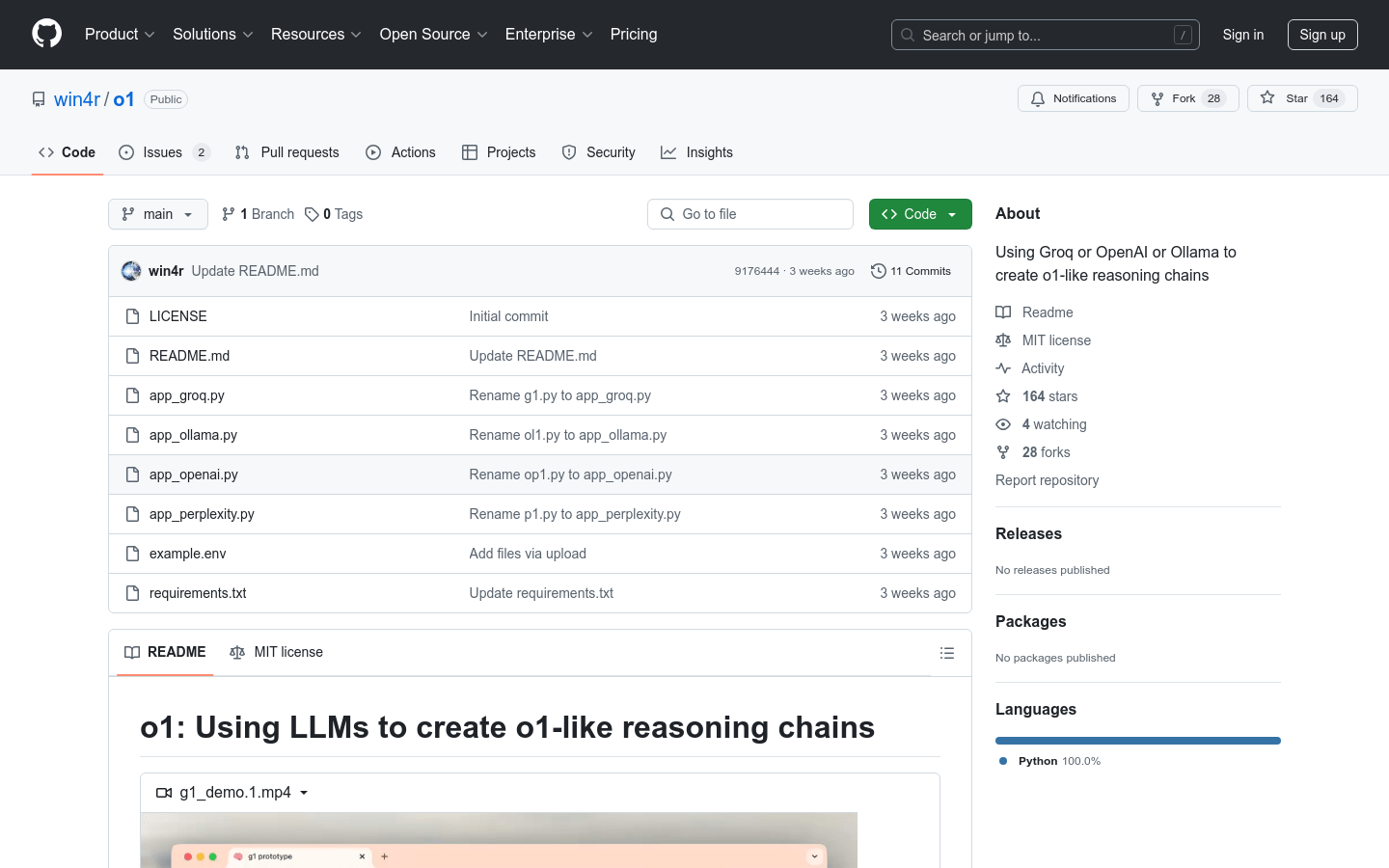

O1
Overview :
o1 is an experimental project aimed at creating reasoning chains using large language models (LLMs) to help the model tackle logic problems that are typically challenging. It supports Groq, OpenAI, and Ollama backends and enables the model to 'think' and solve problems through dynamic reasoning chains. o1 demonstrates that significant improvements in the logical reasoning abilities of existing models can be achieved through prompts alone, without the need for additional training.
Target Users :
The target audience for o1 includes data scientists, AI researchers, and developers who need to employ large language models to tackle complex logical problems. o1 enhances the model's reasoning capabilities by providing reasoning chains and prompt strategies, thereby improving its ability to handle logical challenges and increase accuracy.
Use Cases
Data scientists use o1 to enhance model performance on specific datasets
AI researchers utilize o1 for experimental studies on model reasoning capabilities
Developers use o1 to create applications capable of solving complex problems
Features
Supports Groq, OpenAI, and Ollama backends
Enables the model to think and solve problems through reasoning chains
Dynamic reasoning chains with each step visible to the user
System prompts include suggestions for the model, such as trying multiple approaches and exploring alternative answers
Improves the model's accuracy on specific issues without training
Provides a quick start guide for ease of use
Supports local models, allowing users to run them on their local machines
How to Use
1. Clone or download the source code of the o1 project
2. Install the required Python libraries and dependencies
3. Set environment variables as needed, such as API keys
4. Run the appropriate Python scripts, such as app_openai.py or app_ollama.py
5. Open a web browser and access the Streamlit UI
6. Input questions or logical problems in the UI and observe the model's reasoning process
7. Analyze the model's reasoning chain and the final answers to assess accuracy and logical validity
8. Adjust prompt strategies as necessary to enhance the model's reasoning ability
Featured AI Tools

Gemini
Gemini is the latest generation of AI system developed by Google DeepMind. It excels in multimodal reasoning, enabling seamless interaction between text, images, videos, audio, and code. Gemini surpasses previous models in language understanding, reasoning, mathematics, programming, and other fields, becoming one of the most powerful AI systems to date. It comes in three different scales to meet various needs from edge computing to cloud computing. Gemini can be widely applied in creative design, writing assistance, question answering, code generation, and more.
AI Model
11.4M
Chinese Picks

Liblibai
LiblibAI is a leading Chinese AI creative platform offering powerful AI creative tools to help creators bring their imagination to life. The platform provides a vast library of free AI creative models, allowing users to search and utilize these models for image, text, and audio creations. Users can also train their own AI models on the platform. Focused on the diverse needs of creators, LiblibAI is committed to creating inclusive conditions and serving the creative industry, ensuring that everyone can enjoy the joy of creation.
AI Model
6.9M













